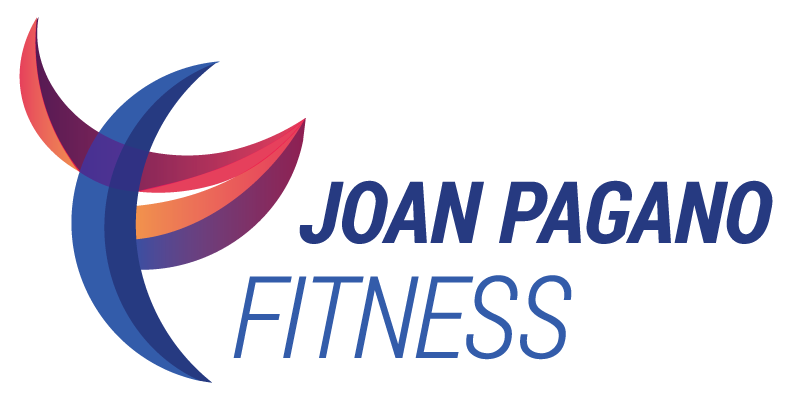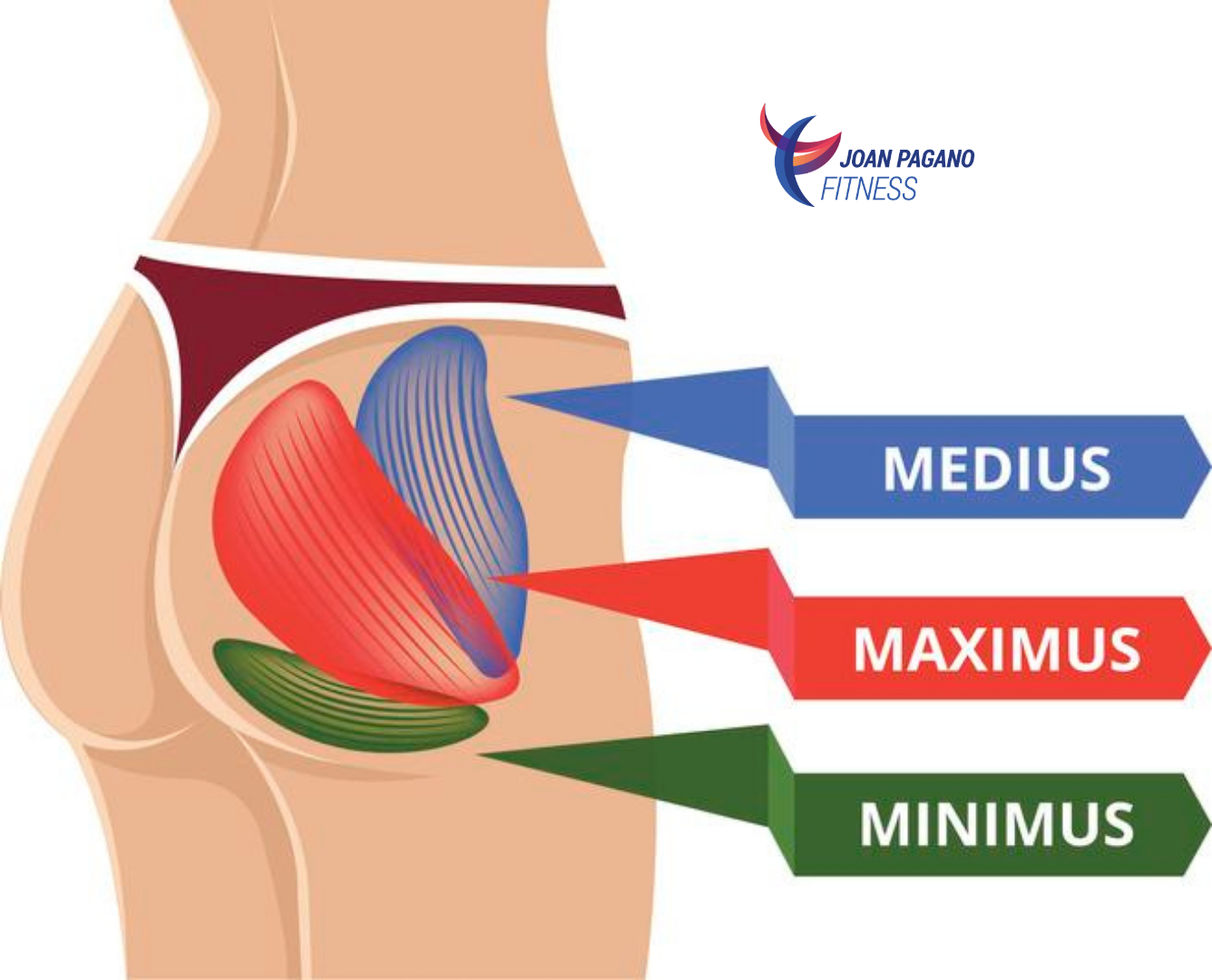The Best Glute Exercises
The best glute exercises target the three gluteal muscles in your buttocks – the gluteus maximus, medius, and minimus – which generate power for lower body strength and stability.
A combination of factors related to aging and sedentary lifestyles cause the gluteal muscles to atrophy, losing strength and size. “Dormant butt” syndrome refers to de-conditioning of the glutes. Without their strength, you are likely to experience declining stability and risk of injury in the lower body.
Why strengthen your glutes?
Support the spine and stabilize the pelvis
Prevent back pain
Boost propulsion during walking, running, and stair-climbing
Reduce risk of knee injury
Improve balance
1) Support the spine and stabilize the pelvis
Strong glutes provide support for the spine and help maintain the position of the pelvis for optimal lower back alignment and good posture. Standing properly counteracts the constant force of gravity on the body, reducing stress on the spine and ensuring that the joints work efficiently.
2) Prevent back pain
When the glutes are weak, you overcompensate by using the muscles in your back to stabilize your body, increasing the load on the spine, and causing stress, pressure, and tension to the low back. The gluteals also help protect the low back when you engage them for lifting.
3) Boost propulsion during walking, running, and stair-climbing
The glutes generate power for walking, especially walking quickly or uphill, for running, and for climbing stairs. The gluteus maximus, the biggest gluteus muscle, propels you forward when you walk or run, while the glute medius and minimus help stabilize the hip and pelvis.
4) Reduce risk of knee injury
Weak glutes negatively affect lower body alignment of the hip to the knee. If the glute medius is weak, it can cause the femur (thigh bone) to rotate inward, loading the knee joint unevenly, and stressing the knee. Women are particularly susceptible to this type of knee injury.
5) Improve balance
With proper alignment, your weight-bearing joints are stacked for balance – hips over knees over ankles. When standing on one leg, engage your core to hold the alignment while you simultaneously press your heel into the ground and activate your glutes so that your entire leg is working to support you as you balance.
The Best Glute Exercises
A word about the anatomy of the glutes
The glute minimus lies directly underneath the medius, and shares the same functions, which are to abduct and internally rotate the thigh, and assist in stabilization of the hip and pelvis. Therefore, most medius and minimus exercises are the same, here focusing on hip abduction (lifting the leg laterally to the side).
For all exercises, begin by doing one set of 10-15 repetitions, and progress to 2-3 sets.
Squat
Hip hinge
Leg lifts, 3 ways
Stationary lunge
Bridge
1) Squat
The squat is the #1 exercise for life. By working the muscles of the buttocks, thighs, and lower legs, as well as using the abdominal muscles to stabilize the torso, the squat is as close as we can get to a full-body exercise. It is the same movement that we need to get up from a seated position, so it is a very functional exercise that keeps us independent as we age.
Stand in front of a chair with your feet parallel, slightly wider than hip-width apart.
Shift your weight back onto your heels and raise your arms forward for balance, looking straight ahead.
Inhale, bend your knees and reach back with your hips, lowering your weight as if you were going to sit down.
Keep your back straight as you lean forward with your torso.
Continue to bend your knees until you tap the edge of the chair with your hips.
Exhale as you squeeze your buttocks to return to the start position.
Squat: The Best Glute Exercises - Video 1
The squat is the #1 functional exercise for life, working the glutes for lower body strength and stability.
See related: Two variations of the squat depicted in the NYT’s article, The Power of the Squat.
2) Hip hinge
The hip hinge works the major muscle groups of your back side (the “posterior chain”): the glutes, hamstrings, and erector spinae (spinal erectors), while engaging the abdominals. It is a functional movement which prepares your whole body to meet the demands of daily activities more effectively and with less strain, for example in activities where you are standing leaning forward, as in doing dishes, making the bed, folding laundry, and brushing your teeth. Instead of bending forward from the waist, rounding the upper back, flex forward from the hip with your spine straight.
Stand with your legs parallel, slightly wider than hip width apart, knees softly bent.
Stack your ribs over hips, spine in neutral, and draw your abdominals tight.
Rest your hands on your waist.
Push back with your hips as you lengthen your trunk forward, head and neck aligned with the spine.
Hinge to 45 degrees or more, then squeeze the glutes to return to standing.
Hip hinge: The Best Glute Exercises - Video 2
Keep your back straight as you flex forward from the hip, working all the muscles of your back side: glutes, spinal erectors, and hamstrings.
Related: Hip Hinge Exercise and Bodyweight Back Exercises
3) Leg lifts, 3 ways
This trio of leg lifts works all the muscles around your hips, the glute medius and minimus in the side leg lift (hip abduction); the glute maximus in the back leg lift (hip extension); and the groin muscles in the inner thigh lift (adduction).
For all variations, stand near something for support and keep the supporting leg straight, with a slight bend at the knee, i.e., don’t lock the knee joint. Perform all reps and then change sides.
For the side leg lift, rotate the leg slightly inward from the hip, so that your toe points down when you lift your leg.
For the back leg lift, externally rotate the leg out from the hip and move the leg behind you at an angle (as in the video).
For the inner thigh lift, with the leg externally rotated, cross it over your other leg in front of you.
Leg lifts, 3 ways: The Best Glute Exercises - Video 3
Work all the muscles around your hips in an easy sequence, strengthening and firming your thighs while building bone density in your femur.
4) Stationary lunge
The lunge is a multi-joint exercise that strengthens the glutes, quads, and hamstrings. You are likely to feel the quads burning (working) in the front of the thigh first but focus on feeling the effort in your glutes and hamstrings of the forward leg as you rise from the lowered position.
Stand next to something for support, with your feet parallel, a giant step apart with your back heel lifted.
Keep your hips square to the front and your weight centered evenly between your feet.
Inhale as you bend both knees keeping your front knee directly over your ankle. The motion is up and down, not forward and backward.
Exhale as you straighten your legs while keeping the back heel lifted.
Do all your reps and then change sides.
Stationary lunge: The Best Glute Exercises - Video 4
Get creative about using your rooms for exercise! Here you are strengthening your glutes and your femur while multi-tasking your dinner.
See related: Exercises for Osteopenia of the Hip
5) Bridge
The bridge exercise for glutes is a simple bodyweight exercise that strengthens the entire back side – glutes, hamstrings, and spinal erectors, and builds core stability.
As you activate the glutes by pushing through the heels and lifting your hips, the goal is to roll sequentially through the entire spine, mobilizing the vertebral joints from top to bottom.
Lie on your back with your knees bent, legs hip distance apart, feet pointing forward. Rest your arms by your sides.
Do a pelvic tilt, connecting your low back to the floor.
Starting at the base of your spine, push through your heels, peeling your back off the floor, one vertebra at a time, until your body is in a straight line from knees to shoulders.
As you release down, pay special attention to rolling through the curve in the low back, touching down one vertebra at a time.
For variation of Bridge with hip abduction, place the band above your knees and when you perform the Bridge, open your knees, close them, and lower back down.
Bridge: The Best Glute Exercises - Video 5
This movement targets your entire backside - glutes, hamstrings, and spinal muscles - while your core works to stabilize your pelvis.
For more details and expert tips, see the Bridge Exercise for Glutes and Bodyweight Back Exercises.
Disclaimer: The information presented in this article should not be construed as medical advice. It is not intended to replace consultation with your physician or healthcare provider.

